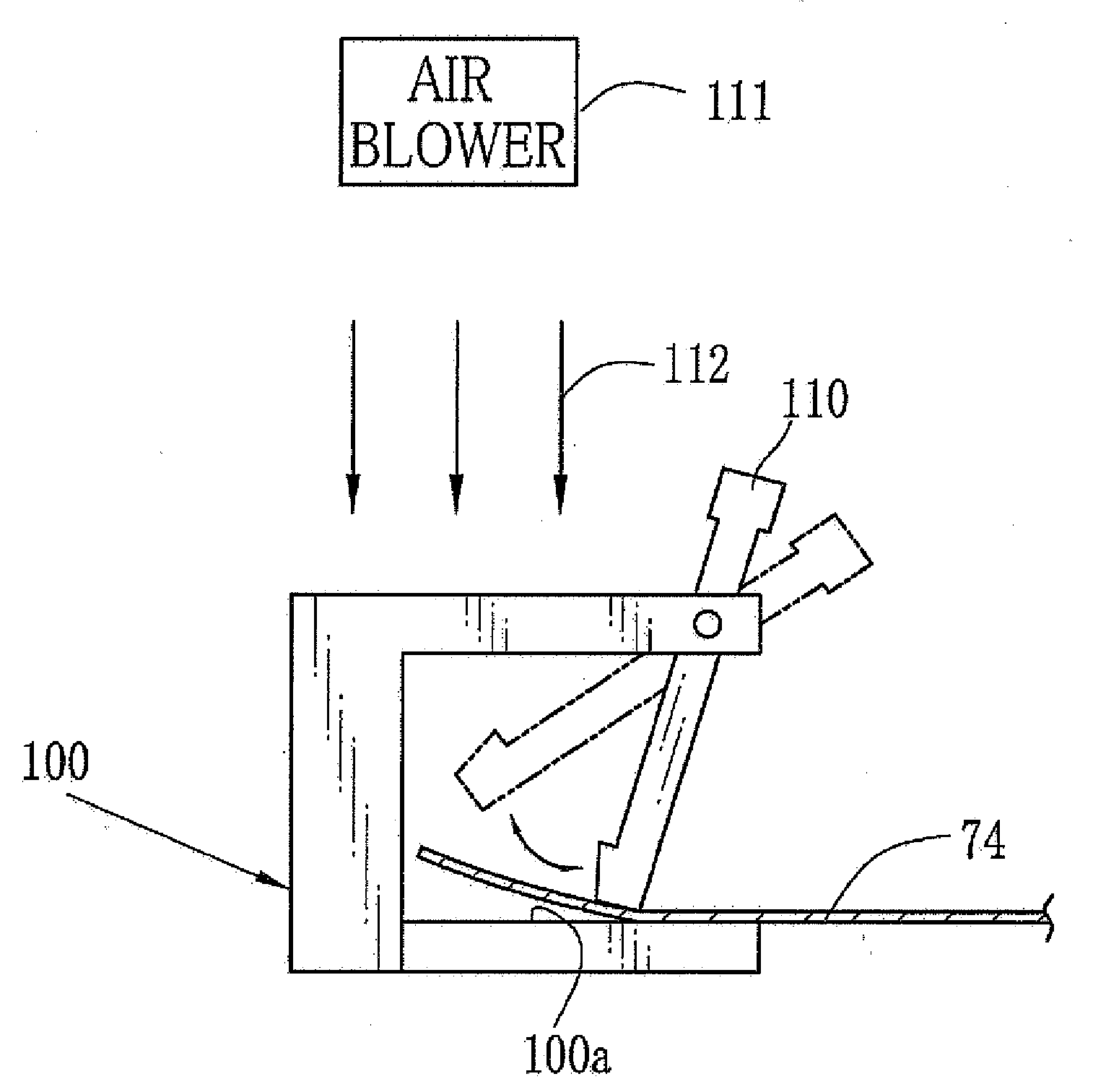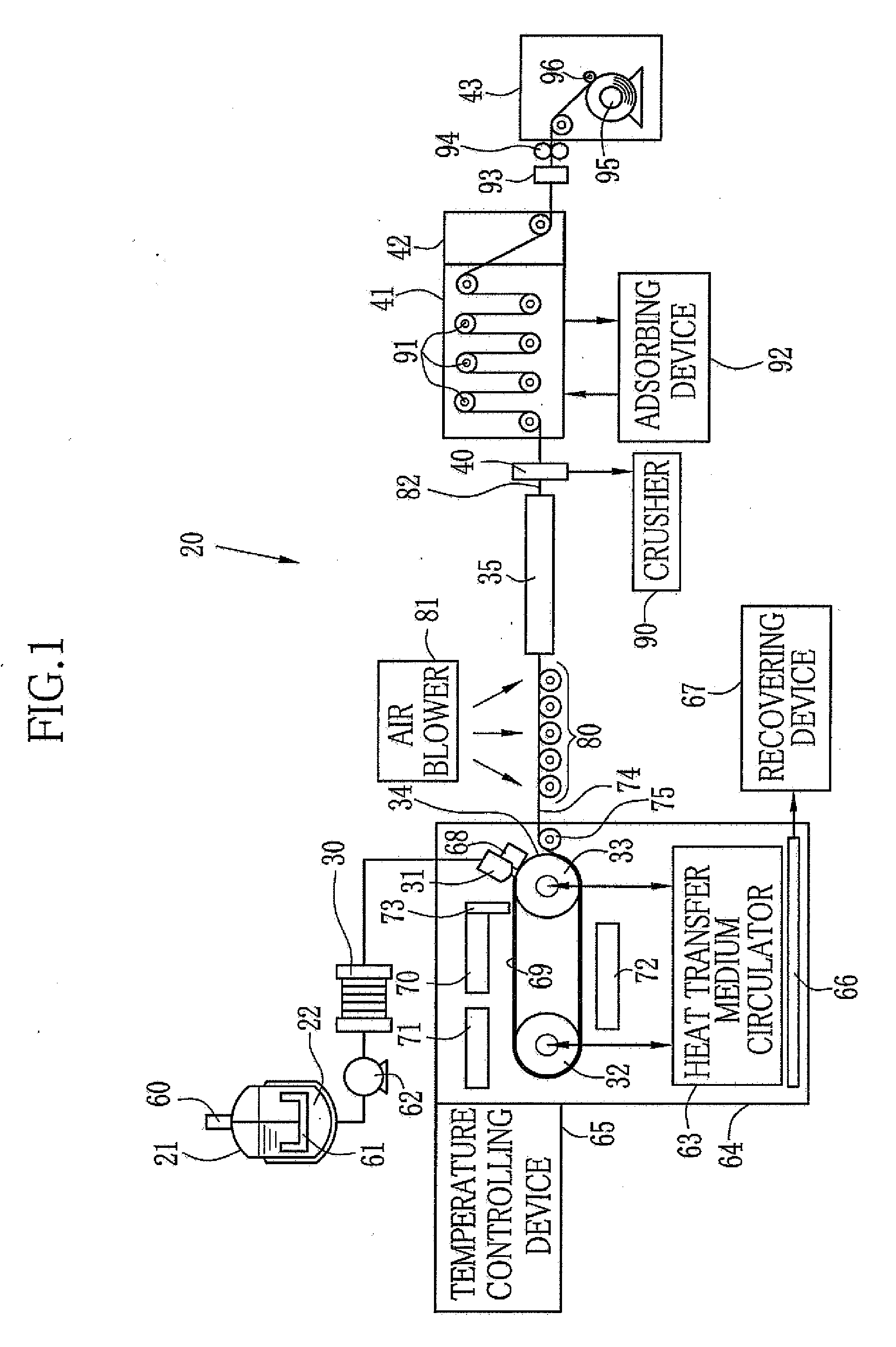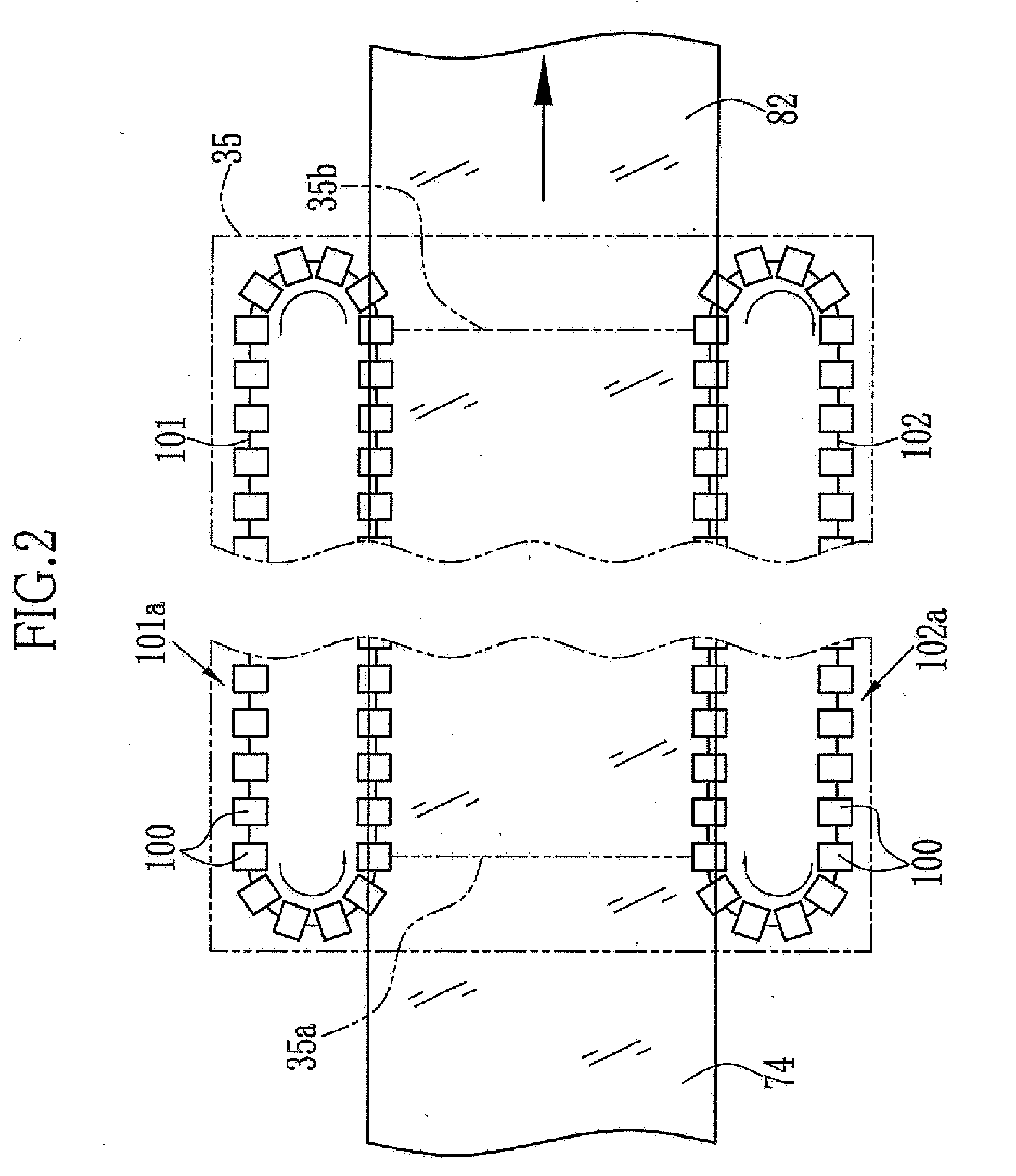Tenter clip and solution casting method
- Summary
- Abstract
- Description
- Claims
- Application Information
AI Technical Summary
Benefits of technology
Problems solved by technology
Method used
Image
Examples
Embodiment Construction
[0028]In followings, embodiments of the present invention will be explained. However, the present invention is not restricted in the embodiments.
[Raw Materials]
[0029]As polymer of this embodiment, cellulose acylate is preferable, and triacetyl cellulose (TAC) is especially preferable. TAC may be produced from cotton linter or cotton pulp, or a mixture of materials respectively obtained from cotton linter and cotton pulp, and preferable TAC is produced from cotton linter. It is preferable in cellulose acylate that the degree of substitution of acyl groups for hydrogen atoms on hydroxyl groups of cellulose preferably satisfies all of following formulae (I)-(III). In these formulae (I)-(III), A is the degree of substitution of the acetyl groups for the hydrogen atoms on the hydroxyl groups of cellulose, and B is the degree of substitution of the acyl groups for the hydrogen atoms while each acyl group has carbon atoms whose number is from 3 to 22. Note that at least 90 wt. % of TAC is ...
PUM
| Property | Measurement | Unit |
|---|---|---|
| Temperature | aaaaa | aaaaa |
| Temperature | aaaaa | aaaaa |
| Temperature | aaaaa | aaaaa |
Abstract
Description
Claims
Application Information
 Login to View More
Login to View More - R&D
- Intellectual Property
- Life Sciences
- Materials
- Tech Scout
- Unparalleled Data Quality
- Higher Quality Content
- 60% Fewer Hallucinations
Browse by: Latest US Patents, China's latest patents, Technical Efficacy Thesaurus, Application Domain, Technology Topic, Popular Technical Reports.
© 2025 PatSnap. All rights reserved.Legal|Privacy policy|Modern Slavery Act Transparency Statement|Sitemap|About US| Contact US: help@patsnap.com



